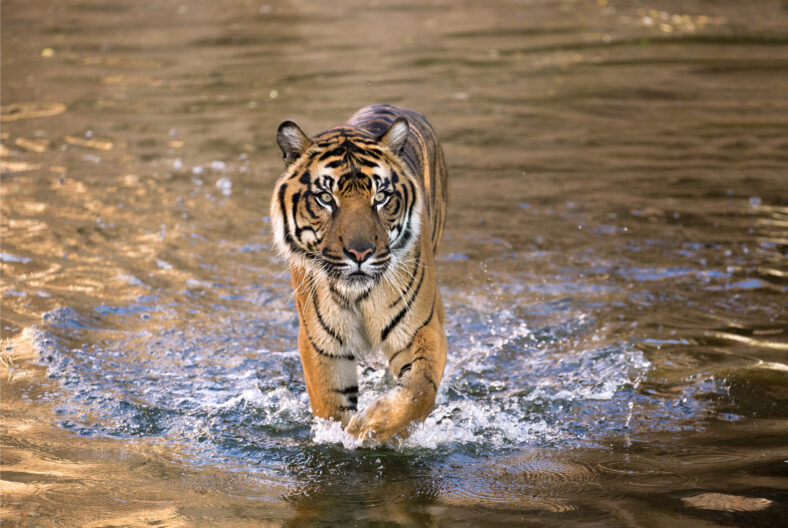Tiger Poachers Are Relying On Fishing Boats To Smuggle Illegal Parts, And This Knowledge Could Help With Efforts To Save The Critically Endangered Cats

Teams of tiger poachers in Malaysia have been using commercial fishing boats that are part of a complex network of routes to smuggle the body parts of illegally killed Malayan tigers and other poached animals to Vietnam.
Researchers from conservation organizations Panthera and ZSL, in collaboration with Malaysia’s Sunway University, interviewed more than four dozen people involved in the operations for their new study.
They found that fishing boats were cheaper, able to carry more goods, and were less likely to be checked by customs compared to air or land routes. The new research could help with efforts to save the critically endangered cats.
“To really crack a problem and insert the right intervention that’s going to have any impact, you have to understand the thing inside out,” said Rob Pickles, the lead author of the study from Panthera.
“That’s what we hope that this study does—contribute to that depth of understanding of the problem to allow us to tailor the interventions.”
In the mid-20th century, there was an estimated population of 3,000 tigers in Malaysia. Now, only about 150 of the cats are left. Over the last 25 years, they have already gone extinct in Cambodia, Laos, and Vietnam.
Tigers have also lost a significant amount of their habitat due to deforestation. Plus, they have been succumbing to the canine distemper virus in recent years, and one of their major food sources, the wild boar, has been largely eradicated by the African swine fever virus.
According to Pickles, this is the last chance to turn things around for tigers. They live in the forests of peninsular Malaysia, which is connected to Thailand to the north. Small teams of poachers live in the forests for three to five months at a time on excursions.
They use heavy steel snares with thick wires to entrap wild tigers and other animals. Once the tigers are caught, they are killed and processed for their bones.

Sign up for Chip Chick’s newsletter and get stories like this delivered to your inbox.
The bones are boiled for days until they become a “gelatinous glue-like substance,” which is then molded into small blocks and sold as medicinal remedies. Claws and teeth are made into amulets.
During the COVID-19 pandemic, Malaysia went on lockdown, and poaching operations slowed to a stop. The researchers took advantage of the time to locate and interview more than 50 individuals involved in the operations.
They learned that fishing boats were also used to transport bear paws, live civets, pangolins, wild boar tusks and meat, monitor lizards, and turtles.
One person told the research team that fishing boats were best for sending out larger items like tiger skins because no one ever checked them.
Recently, Malaysia and Vietnam have both been increasing maritime controls, making it riskier to traffic by fishing boats. Malaysian authorities have also had more success with increasing punishments for wildlife crime.
In the study, the researchers recommended putting more focus on fishing boats and educating potential poachers about the risks and lack of returns regarding animal trafficking.
The study was published in Trends in Organized Crime.
More About:Animals





